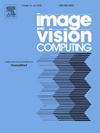Self-ensembling for 3D point cloud domain adaptation
IF 4.2
3区 计算机科学
Q2 COMPUTER SCIENCE, ARTIFICIAL INTELLIGENCE
引用次数: 0
Abstract
Recently 3D point cloud learning has been a hot topic in computer vision and autonomous driving. Due to the fact that it is difficult to manually annotate a qualitative large-scale 3D point cloud dataset, unsupervised domain adaptation (UDA) is popular in 3D point cloud learning which aims to transfer the learned knowledge from the labeled source domain to the unlabeled target domain. Existing methods mainly resort to a deformation reconstruction in the target domain, leveraging the deformable invariance process for generalization and domain adaptation. In this paper, we propose a conceptually new yet simple method, termed as self-ensembling network (SEN) for domain generalization and adaptation. In SEN, we propose a soft classification loss on the source domain and a consistency loss on the target domain to stabilize the feature representations and to capture better invariance in the UDA task. In addition, we extend the pointmixup module on the target domain to increase the diversity of point clouds which further boosts cross domain generalization. Extensive experiments on several 3D point cloud UDA benchmarks show that our SEN outperforms the state-of-the-art methods on both classification and segmentation tasks.

求助全文
约1分钟内获得全文
求助全文
来源期刊

Image and Vision Computing
工程技术-工程:电子与电气
CiteScore
8.50
自引率
8.50%
发文量
143
审稿时长
7.8 months
期刊介绍:
Image and Vision Computing has as a primary aim the provision of an effective medium of interchange for the results of high quality theoretical and applied research fundamental to all aspects of image interpretation and computer vision. The journal publishes work that proposes new image interpretation and computer vision methodology or addresses the application of such methods to real world scenes. It seeks to strengthen a deeper understanding in the discipline by encouraging the quantitative comparison and performance evaluation of the proposed methodology. The coverage includes: image interpretation, scene modelling, object recognition and tracking, shape analysis, monitoring and surveillance, active vision and robotic systems, SLAM, biologically-inspired computer vision, motion analysis, stereo vision, document image understanding, character and handwritten text recognition, face and gesture recognition, biometrics, vision-based human-computer interaction, human activity and behavior understanding, data fusion from multiple sensor inputs, image databases.
 求助内容:
求助内容: 应助结果提醒方式:
应助结果提醒方式:


